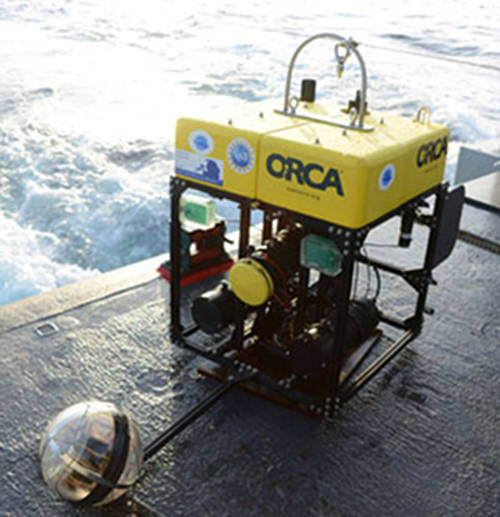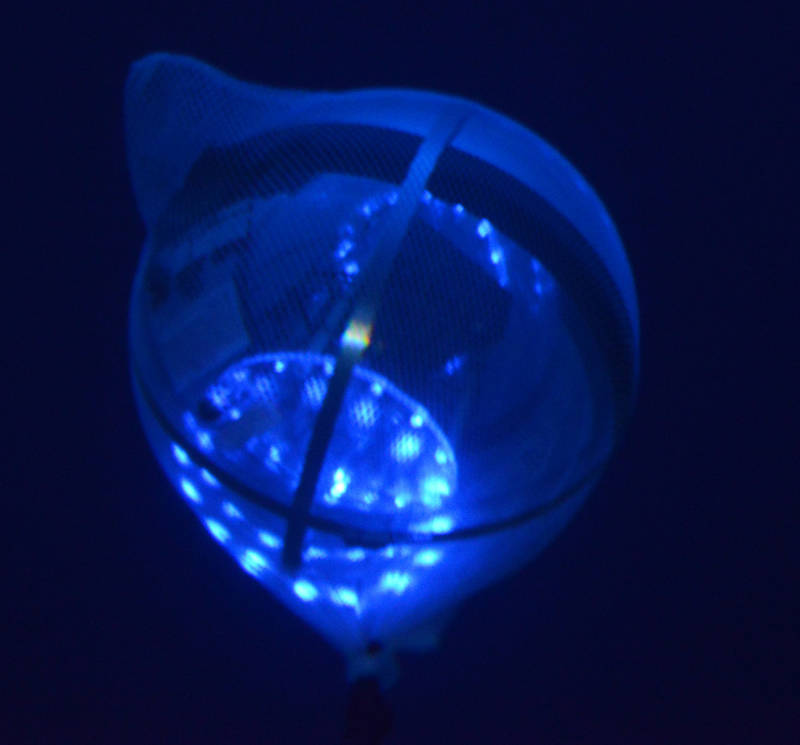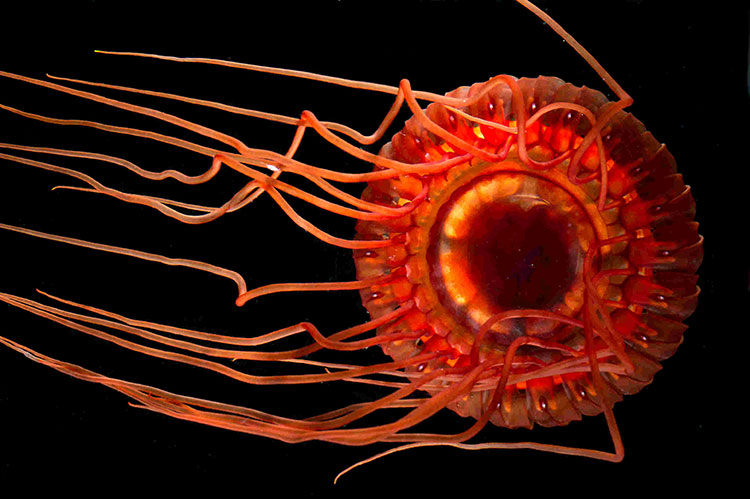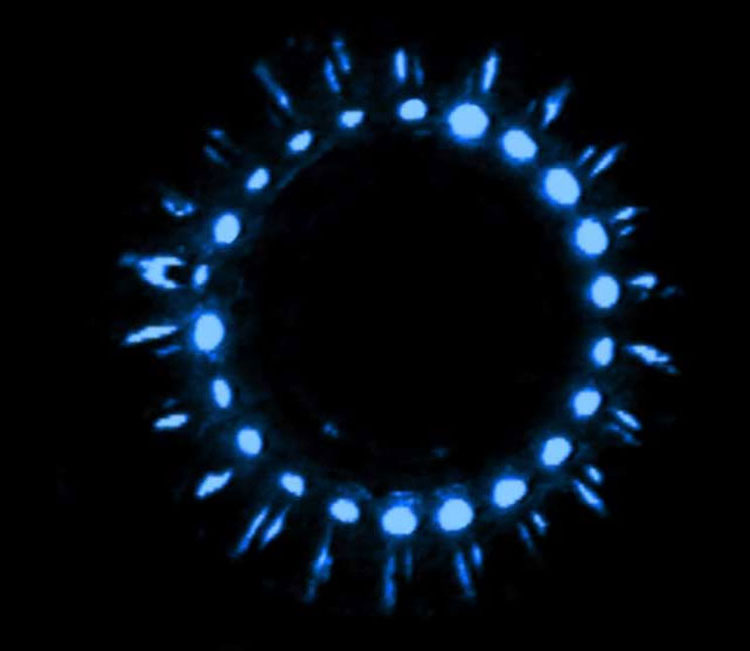
By Edith Widder - CEO & Senior Scientist, Ocean Research & Conservation Association, Inc.

Medusa and e-jelly. Image courtesy of E. Widder Download image (jpg, 34 KB).
The Medusa lander is an upgrade of the Eye-in-the-Sea (EITS) system that gave us phenomenal footage of deep-sea animals in their natural environments on previous expeditions. It is also the same camera platform that captured the first in situ video of the giant squid, Architeuthis dux, in 2012.
Unlike the Eye-in-the-Sea, which needed to be deployed by a submersible or remotely operated vehicle, the Medusa lander can be deployed over the side. Also, it is designed to return to the surface using an acoustic release system.
Just like the Eye-in-the-Sea, the Medusa uses red light illumination that is invisible to most deep-sea inhabitants and an intensified camera that amplifies both this dim illumination as well as any bioluminescence. During this expedition, the Medusa camera system will be deployed for 24-hour time intervals, allowing us to unobtrusively observe animal behavior and bioluminescence on the deep seafloor.

The e-jelly. Image courtesy of E. Widder Download larger version (jpg, 550 KB).
The Medusa will use either a bait box on the end of a bar mounted directly in front of the camera or an optical lure simulating a bioluminescent burglar alarm to attract large mobile predators present in the area that would avoid the white lights and hydraulics of the Global Explorer.
The optical lure is called the e-jelly, or electronic jellyfish, because it emulates the burglar alarm display of the deep-sea jellyfish, Atolla. When caught by a predator, Atolla produces a spectacular bioluminescent display that is akin to a scream for help. In the inky depths, Atolla’s light reveals its attacker to the sensitive eyes of a larger predator who will attack the aggressor, thereby affording the jellyfish an opportunity for escape.
The e-jelly is designed as a ring of 16 blue LEDs mounted in a circuit board. To maximize visibility from any angle, two e-jelly boards are mounted back to back, with their power source, D cells, sandwiched in between and all housed in a Benthos glass sphere.

Atolla wyvillei. Image courtesy of E. Widder Download image (jpg, 89 KB).

Atolla wyvillei burglar alarm display which the e-jelly emulates. Image courtesy of E. Widder Download image (jpg, 39 KB).